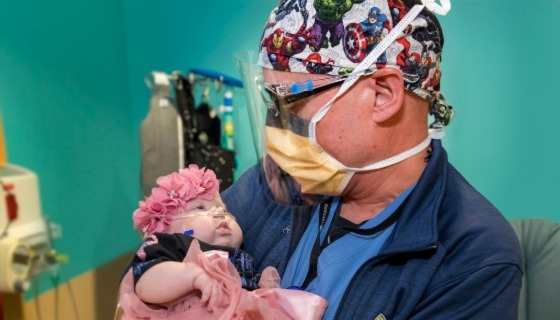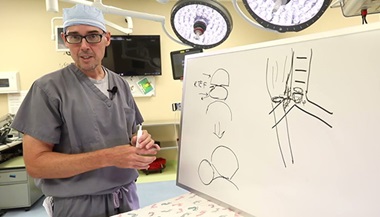Esophageal Atresia
What is esophageal atresia?
Esophageal atresia is a disorder of the digestive system in which the esophagus, the tube that normally carries food from the mouth to the stomach, does not develop properly before birth. In most cases, the upper esophagus ends and does not connect with the lower esophagus and stomach. The top end of the lower esophagus connects to the windpipe. This connection is called a tracheoesophageal fistula (TEF). Some babies with TEF will also have other problems, such as heart or other digestive tract disorders. Other types of esophageal atresia involve narrowing of the esophagus.
Symptoms
- Bluish coloration to the skin (cyanosis) with attempted feedings
- Coughing, gagging and choking with attempted feeding
- Drooling
- Poor feeding
Diagnosis
- Before birth, an ultrasound performed on the pregnant mother may show too much amniotic fluid, which can be a sign of esophageal atresia.
- After birth, the disorder is usually detected when feeding is attempted and the infant coughs, chokes and turns blue. As soon as esophageal atresia is suspected, an attempt to pass a small feeding tube through the mouth or nose into the stomach should be made. The feeding tube will not be able to pass all the way to the stomach in a baby with esophageal atresia.
- An X-ray of the esophagus shows an air-filled pouch and air in the stomach and intestine. A feeding tube will appear coiled up in the upper esophagus.
Treatment
Esophageal atresia is considered a surgical emergency. Surgery to repair the esophagus should be done quickly after the baby is stabilized so that the lungs are not damaged and the baby can be fed. Before the surgery, the baby is not fed by mouth. Care is taken to prevent the baby from breathing secretions into the lungs.
Prognosis
An early diagnosis gives a better chance of a good outcome.





